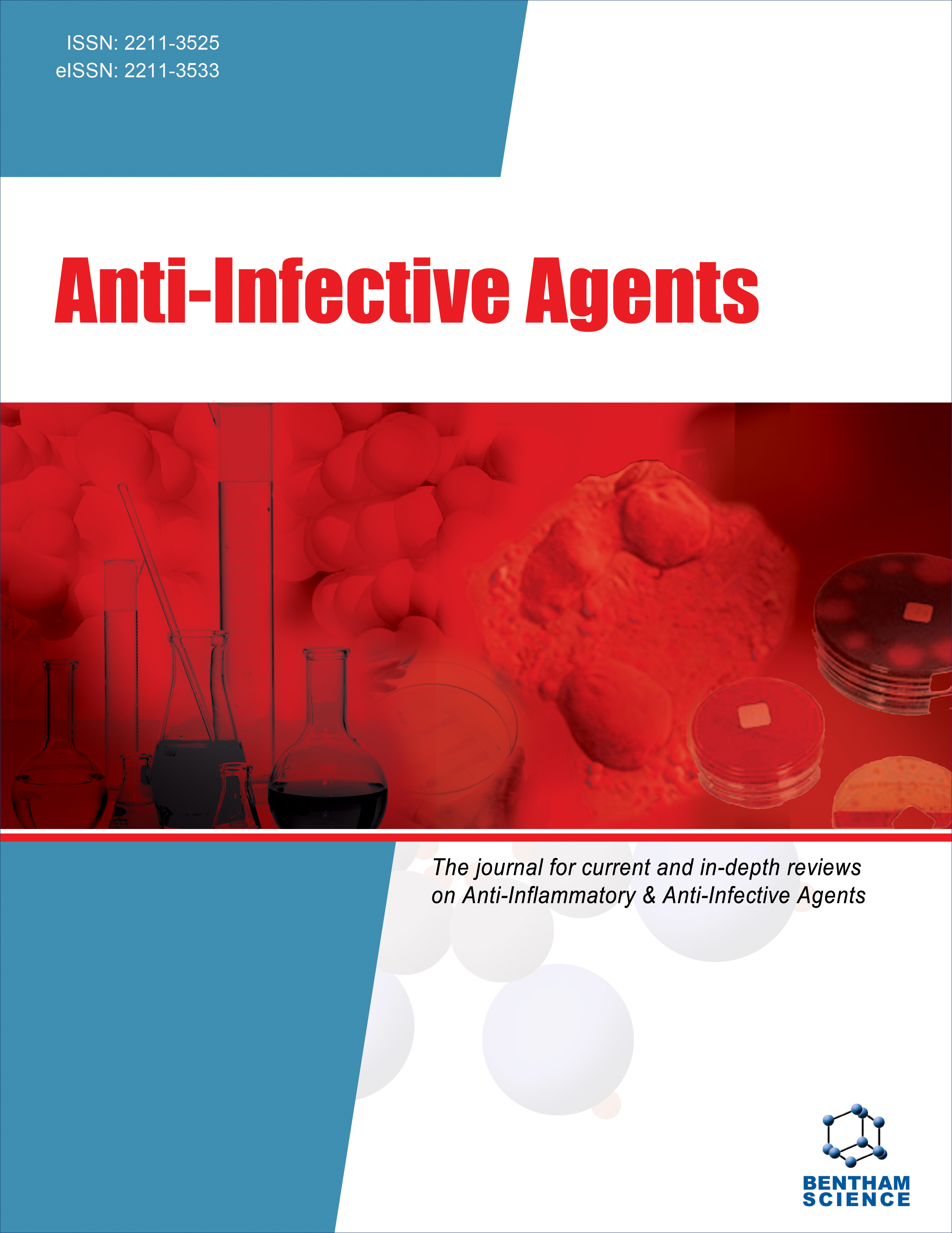- Home
- A-Z Publications
- Anti-Infective Agents
- Previous Issues
- Volume 22, Issue 5, 2024
Anti-Infective Agents - Volume 22, Issue 5, 2024
Volume 22, Issue 5, 2024
-
-
Management of Gingivitis: Contemporary Approaches and Recent Therapeutic Advancements
More LessBackground: Gingivitis, commonly known as gum disease, refers to several types of inflammatory diseases that impact the connective tissues that surround the teeth. Gingivitis causes swelling, redness, and bleeding of the gums in its early stages. Objective: This article aims to describe the standard gingivitis medication. It emphasizes recent advancements in the initial therapy, treatment, and healing mechanisms of gingiviti Read More
-
-
-
Screening of Some Ayurvedic Phytochemicals to Identify Potential Inhibitors against SARS-CoV-2 Mpro by In Silico Computational Approach
More LessBackground: The classical drug discovery approach demands more than a decade of strenuous exploration and substantial monetary or economic support, which is difficult in pandemic conditions, such as COVID-19. Methods: The main purpose of this work was to ascertain the best inhibitors to combat the SARS-CoV-2 Mpro (PDB ID: 6LU7) target. To achieve this, we conducted a molecular docking screening of 35 phytochemicals Read More
-
-
-
Structural Insights into Potent Anti-ulcer Agents for the Eradication of Helicobacter pylori
More LessHelicobacter pylori is the primary bacterium in the development of gastric cancer; thus, its eradication for the prevention and management of peptic ulcers is of utmost importance. Most primary or unexplained peptic ulcers are brought on by Helicobacter pylori infection, which also causes chronic inflammation. The lack of therapeutic compliance, antibiotic resistance, and the breakdown of antibiotics at gastric pH all contri Read More
-
-
-
Antibiotic Resistance in Morganella morganii Species: Mechanisms, Prevalence and Clinical Implication
More LessAuthors: Kara Anfal, Elkolli Meriem and Boussoualim NaouelMorganella morganii, a member of the Enterobacteriaceae family, has gained increasing recognition as an important pathogen due to its multidrug resistance. In addition to its intrinsic resistance, it carries various resistance genes and mobile genetic elements, facilitating the spread of resistance genes. M. morganii develops its mechanisms of resistance through different genetic elements, and its pathogenicity is suppor Read More
-
-
-
New Schiff Base Derived Organotin (IV) Complexes: Synthesis, Characterization, In vitro and In silico Biological Studies
More LessAims: The creation and testing of new Schiff base-based antibacterial organotin (IV) complexes were the objectives of this investigation. Background: Due to developed resistance, antibiotics that were once often used to treat microorganisms are no longer effective against them. It is thought that organotin compounds synthesized from Schiff bases have significant pharmacological effectiveness and work well as antiba Read More
-
-
-
[Cu(dimethylbpy)2Cl]PF6 Complex as an Antibacterial Agent
More LessAuthors: Naghmeh Satarzadeh, Ali Asadipour and Bagher AmirheidariBackground: Antibiotic resistance is currently considered a major public health problem. This subject underscores the critical need for novel and enhanced antibacterial agents with a novel molecular structure and a new target to prevent cross-resistance. Copper exhibits antimicrobial properties by disrupting bacterial cell membranes and interfering with cellular processes. Copper complexes enhance these properties, Read More
-
-
-
Phytochemicals as Adjuvant Therapies in RND Efflux-mediated Multidrug Resistant Pseudomonas aeruginosa Infections and Evaluation Techniques of Efflux Inhibitory Activities in Bacteria
More LessAuthors: Praveena Nanjan and Vanitha BoseOne of the top-listed opportunistic pathogens that are frequently found in medical devices such as ventilation systems is Pseudomonas aeruginosa. These bacteria often cause infections in the lungs (pneumonia), blood after surgery, and other parts of the body. Extreme susceptibility to P. aeruginosa infection primarily exists in immunosuppressed individuals, and long-term evolution has led to the development of genetic re Read More
-
Volumes & issues
Most Read This Month
Article
content/journals/aia
Journal
10
5
false
en


